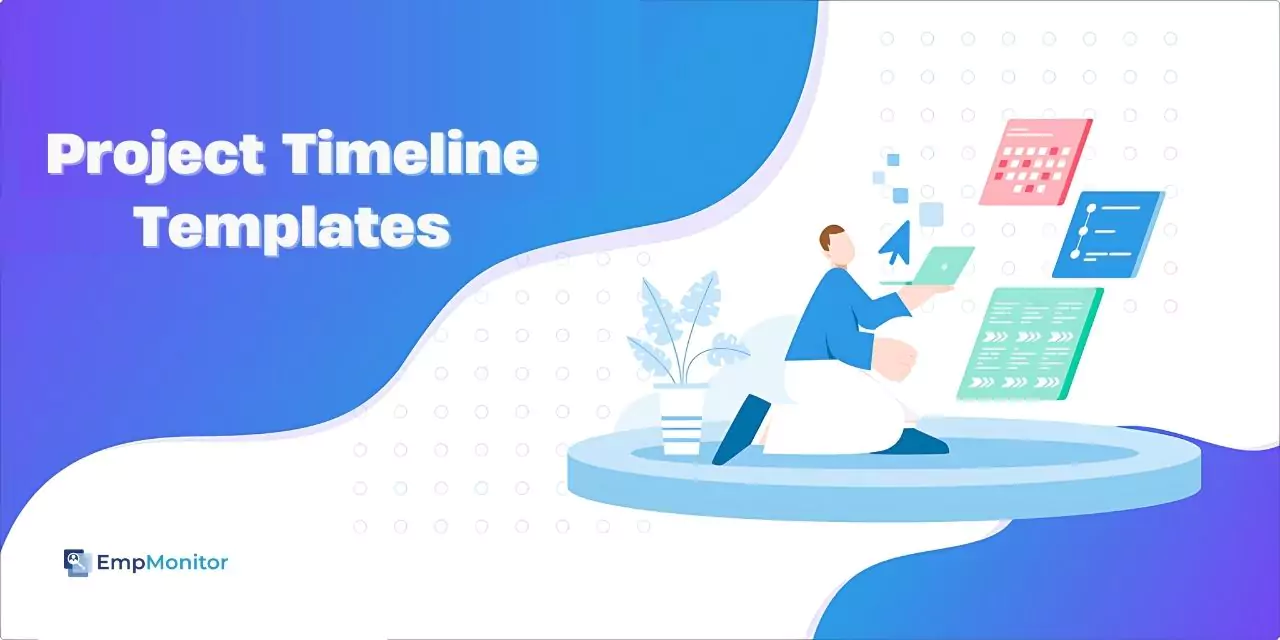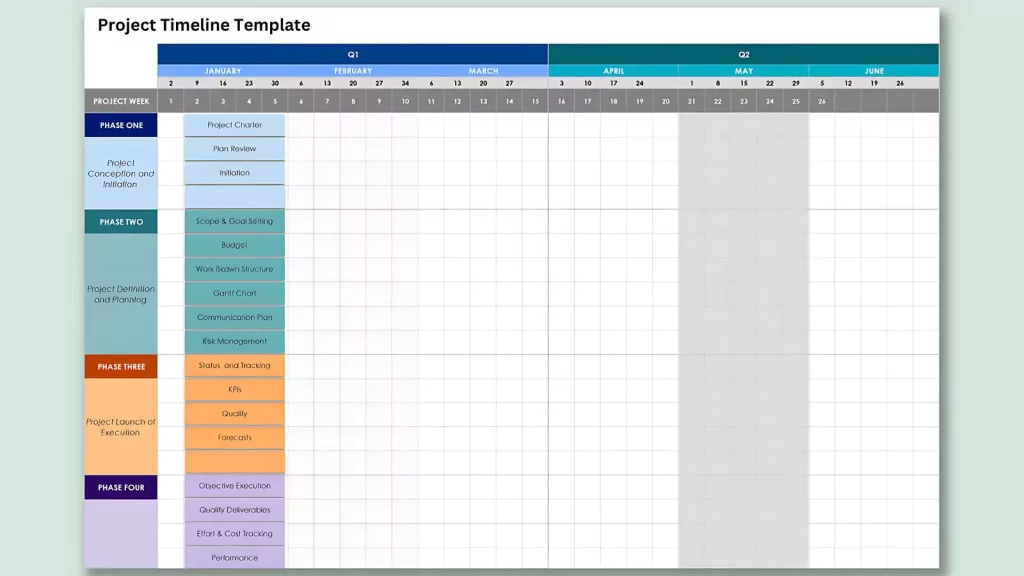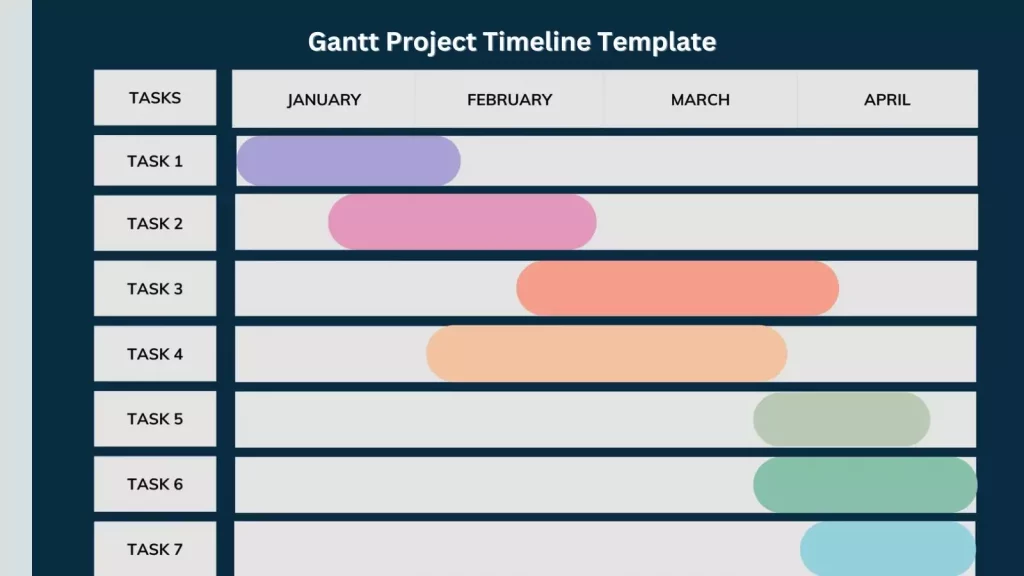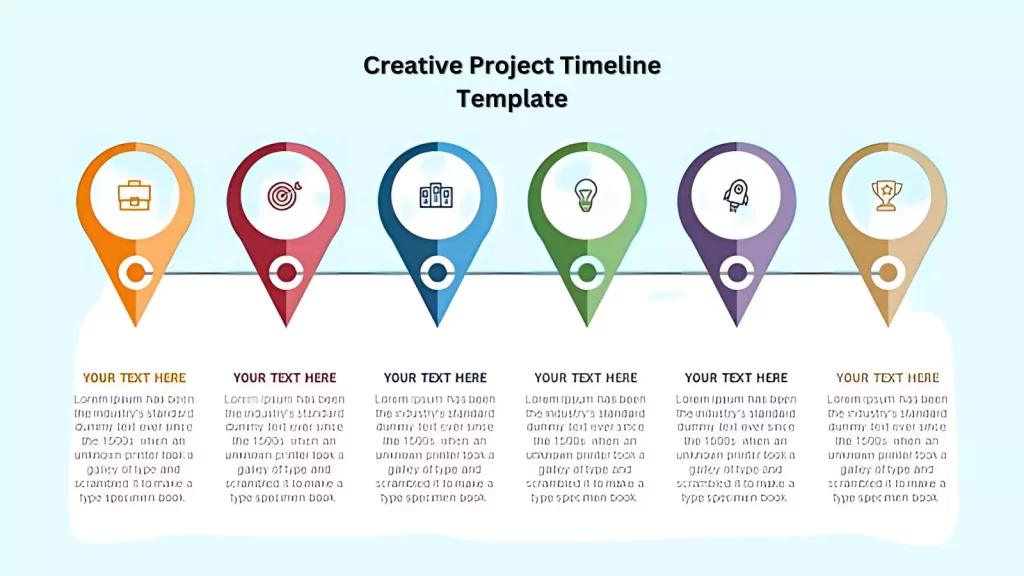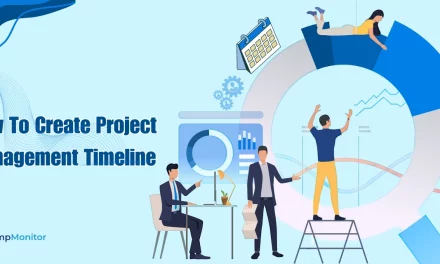Creating a project timeline is essential for keeping tasks on track, meeting deadlines, and ensuring the successful completion of any project. However, developing a timeline from scratch can be time-consuming and complex. That’s where project timeline templates come in handy. These pre-designed frameworks offer a simple and efficient way to visualize your project schedule, allocate resources, and monitor progress.
In this blog, we’ll explore what project timeline templates are, why they are vital for effective project management, and how you can create and customize them to fit your specific needs.
LISTEN TO THE PODCAST NOW!
What Is A Project Timeline Template?
A project timeline template is a pre-structured tool that helps project managers and teams outline the sequence of tasks, milestones, and deadlines involved in a project. It visually represents the project’s schedule, allowing you to see the entire project at a glance, from start to finish. Using a template, you can easily organize tasks, assign responsibilities, and track progress, ensuring that every aspect of the project is aligned with the set timeline. Additionally, incorporating project management tools like EmpMonitor can further enhance project management by providing insights into workforce productivity, enabling teams to optimize task distribution and monitor progress in real time. This approach not only aids in planning but also helps maintain consistency and avoid delays.
Advantages Of Using A Project Timeline Templates
Completing a project within the set timeframe highlights a team’s ability to collaborate effectively and can lead to significant cost savings for businesses. A well-structured project timeline reduces risks, manages project scope, aligns budgets, and ensures consistent quality.
Project timeline templates provide teams with the tools to achieve predictable results and guide the project through all management phases.
Visual Representation: Project timeline templates offer a visual overview of the entire project from start to finish. It helps teams identify time-intensive tasks, spot dependencies, and assess potential risks. By understanding the workflow, teams can reallocate resources to critical tasks and address issues proactively.
These visual workflows also give stakeholders a clear, at-a-glance understanding of the project, ensuring everyone remains aligned and can discuss the timeline effectively.
Task Dependencies: Project timeline templates simplify the mapping of dependencies, ensuring that tasks are sequenced correctly. The visual timeline allows teams to quickly identify potential risks caused by dependencies, enabling them to reallocate resources to prioritize more critical tasks.
Task dependencies also highlight essential work within the project. Collaboration during dependency mapping ensures that those most familiar with the tasks can contribute valuable insights.
Resource Management: Capacity planning is one of the most challenging aspects of the project management timeline. Sequencing tasks based on dependencies can sometimes lead to certain overburdened team members while others remain underutilized.
A project timeline templates allows teams to assign resources efficiently and adjust the sequence as needed- to balance resource availability with task dependencies.
Deadline Management: Whether the timeline follows a start-to-finish approach or is based- on a fixed deadline, a project timeline template helps define specific deadlines for each task. If a deadline changes, the template automatically updates all dependent tasks, helping teams identify scheduling issues early and make necessary adjustments.
Risk Mitigation: Every project has inherent risks, such as unrealistic deadlines or uneven resource allocation. A project timeline template helps teams identify these risks early and make adjustments.
With the visual timeline’s clear depiction of task dependencies, team members can identify potential bottlenecks and optimize the workflow to reduce risks.
Project Tracking: Using a template to establish the project timeline makes it easier for teams for project tracking their progress against specific tasks and overall deadlines. As the project advances, any roadblocks become more apparent, allowing teams to quickly adapt.
In this process, the workforce management software EmpMonitor can be incredibly beneficial. By providing detailed reports and analytics, EmpMonitor helps you gain insights into employee productivity and potential distractions. This information allows teams to identify bottlenecks and optimize workflow efficiently, ensuring that project milestones are met on time. With EmpMonitor’s real-time monitoring features, you can stay informed about progress and make data-driven decisions to keep your project on track.
Stakeholders and others within the organization can use the project timeline to quickly assess the project’s status, task completion, and resource distribution.
EmpMonitor: Workforce Management Software
EmpMonitor- workforce management software designed to help organizations monitor, manage, and optimize their employees’ performance. By providing insights into productivity, attendance, and overall work behavior, EmpMonitor empowers employers to make data-driven decisions that enhance operational efficiency.
Effective project management software is key to the successful completion of projects on time. One essential aspect of project management is managing and creating a project timeline.
Here are the key features of EmpMonitor:
1. Real-Time Tracking:
Feature: EmpMonitor provides real-time tracking of employee activities and task progress.
Benefit: By monitoring how employees are spending their time, project managers can gauge whether tasks are progressing according to the project timeline. This helps in identifying any deviations or delays early on, allowing for timely adjustments to the project schedule template.
2. Productivity Analytics:
Feature: The tool offers detailed productivity analytics, including time spent on various tasks and applications.
Benefit: Analyzing productivity data helps in understanding how effectively team members are working on project tasks. If certain tasks are taking longer than expected, project managers can use this data to revise the timeline and allocate resources more effectively.
3. Resource Utilization Insights:
Feature: EmpMonitor tracks resource usage and employee engagement.
Benefit: Insights into how resources (time, personnel, and tools) are being used can help project managers ensure that resources are aligned with project timelines. If resource allocation is skewed, adjustments can be made to improve efficiency and adhere to the timeline.
4. Task Management and Accountability:
Feature: EmpMonitor provides detailed reports on task completion and employee performance.
Benefit: By fostering accountability through detailed tracking, EmpMonitor ensures that tasks are completed as scheduled. Project managers can use these reports to keep team members accountable and make necessary timeline adjustments based on performance data.
EmpMonitor is not specifically designed for project management, its features can be leveraged to enhance the creation and management of project timeline templates. By utilizing its tracking, analytics, and reporting capabilities, project managers can create more accurate and effective project timelines.
What Defines A Strong Project Timeline Template?
An effective project timeline templates provides a clear and detailed overview of the project’s goals, key milestones, deadlines, and tasks. It should be easy to interpret and adaptable, using color coding and various shapes to distinguish different task types.
The template should be versatile enough to support various project management methodologies, such as Agile and waterfall approaches, and allow teams to include specific details like resources and estimated timeframes.
A good project timeline template fosters collaboration and transparency, enabling all team members to update. It encourages communication and teamwork, driving collective efforts toward the project’s goals.
Key features of a powerful project timeline template include:
- Milestones: Marked milestones to help teams identify critical tasks and deliverables.
- Flexibility: The ability to adjust to changes in project scope or unexpected challenges as the project progresses.
- Progress Tracking: Automatic tracking of progress as tasks are completed and updated.
- Resource Allocation: The ability to assign resources to tasks according to project needs.
- Detailed Deadlines: Inclusion of specific- deadlines for each task and subtask.
- Automation: Simplified management through automation, allowing team members to focus on essential work.
- Cross-Platform Compatibility: A template that works seamlessly across multiple platforms for easy access by all stakeholders.
- Task Dependencies: Clear representation of the relationships between tasks, indicating where the completion of one task depends on another.
How To Utilize A Project Timeline Template
Enter Project Details:
The project details outline the team approach. Include the project goals, deliverables, tasks, timeline, processes, and team members involved. It provides a comprehensive overview of the project and its purpose. Incorporate roles and responsibilities, budget details, and other essential information, including customer data.
Make a list of important milestones and then break them down into specific tasks: For example, a Project management tool allows tasks to be quickly linked to Confluence’s project timeline templates without requiring re-entries.
Set Task Durations:
Specify the expected duration for each task, considering other ongoing projects and resource availability, including team members from various departments. Be realistic about durations to ensure a comprehensive view of the project timeline.
Manage Dependencies:
Identify tasks that are contingent on the completion of other tasks and map these dependencies in the project timeline templates. For instance, development may need to wait for customer approval of user interface prototypes.
Adjust Timelines:
With tasks, milestones, and dependencies established, make necessary adjustments. Assess if the project scope is too extensive or if deadlines can be shifted to accommodate the work. Evaluate resource availability for major tasks and consider breaking them into smaller tasks if required. Ensure team and stakeholders have clear expectations and understand how to meet them.
Update Progress:
Anticipate roadblocks and changes throughout the project. Regular progress updates keep the team informed and help manage expectations. Communicate any changes or adjustments promptly to avoid surprises.
Also Read,
Project Management Timeline: How To Create One & Examples
7 Tips For Better Project Tracking & Deliver Projects On Time
4+ Project Timeline Templates: To Keep Your Projects On Track
Managing projects effectively often boils down to staying organized and keeping track of deadlines. Project timeline templates are invaluable tools that help you visualize the schedule and keep everyone on the same page. Here are 4+ project timeline templates that you can use to streamline your project management and ensure timely completion.
1. Project Timeline Template
Organizing and planning projects with digital tools that simplify brainstorming and categorizing major activities. It helps project managers and teams gain a clear and thorough understanding of the project scope, timeline, and resource needs.
The number of activities included in a project timeline will vary based on the project’s size and complexity. Smaller projects may only require a few key activities, while larger projects might need dozens to cover all aspects.
A project timeline template is especially beneficial as it provides a centralized location for all project-related information for remote teams. Team members can access the timeline and view real-time updates, eliminating the need for email threads or separate documents to track progress.
2. Gantt Project Timeline Template
The Gantt Project Timeline Template is an excellent tool for managing new and ongoing projects that extend over a long duration. This template provides project teams with a daily, monthly, and yearly overview, making it easier to track progress and plan.
- Daily View: Tracks day-to-day tasks and activities.
- Monthly View: Provides a snapshot of progress made within the month, helping teams identify potential roadblocks.
- Yearly View: Provides a high-level project perspective, enabling businesses to spot long-term trends and plan accordingly.
Utilizing the Gantt timeline template can improve project management, streamline operations, and boost productivity.
3. Creative Project Timeline Template
The Creative Project Timeline Template is a highly effective tool for organizing and managing creative projects of any size or complexity. It provides a structured framework that facilitates clear visualization of project milestones and critical tasks, offering a streamlined approach to project management.
Whether working on a small-scale project or a vast, intricate initiative, this template- is designed to accommodate and explore various ideas. Its intuitive drag-and-drop interface allows for quickly creating detailed timelines and highlighting important milestones and tasks. It ensures that everyone involved knows the project’s progress and core deadlines.
4. Roadmap Template
The Roadmap Template is designed to manage all your timelines and production stages in a single centralized location. It includes pre-built views, custom statuses, and custom fields to tailor project management to your needs.
This template offers a macro-level view of your project’s vision and direction, enabling you to track progress, gain real-time insights, and align work across teams and individuals.
5. Excel Project Timeline Template
The Excel project timeline templates provide a clear view of vital milestones and critical tasks- throughout your project. It allows you to identify essential deadlines, dependencies, and potential delays, offering a high level of organization and clarity crucial for effective project management.
By breaking down your project into specific milestones and tasks, you gain a comprehensive overview, helping you make informed decisions on resource allocation, manage expectations, and stay aligned with your project goals.
Wrapping Up
Project timeline templates are indispensable tools for organizing and managing your project’s journey. They provide a clear visual representation- of tasks, deadlines, and milestones, helping you stay on track and ensure timely delivery. Whether you’re managing a small-scale project or a complex, multi-phase initiative, using these templates can streamline your workflow, enhance team collaboration, and boost overall productivity.
To further enhance your project management timeline template efforts, consider integrating tools like EmpMonitor. This comprehensive solution offers detailed insights into team productivity and helps you stay on top of progress with real-time data and analytics.
By combining project timeline templates with EmpMonitor’s robust features, you can navigate through every stage with precision, ensure accountability, and achieve success with confidence. Adopt these tools to revolutionize your project management strategy and steer your projects toward successful completion.

